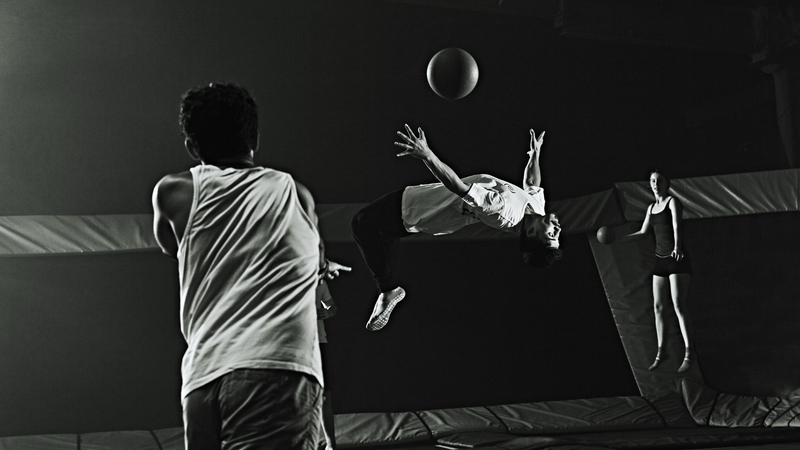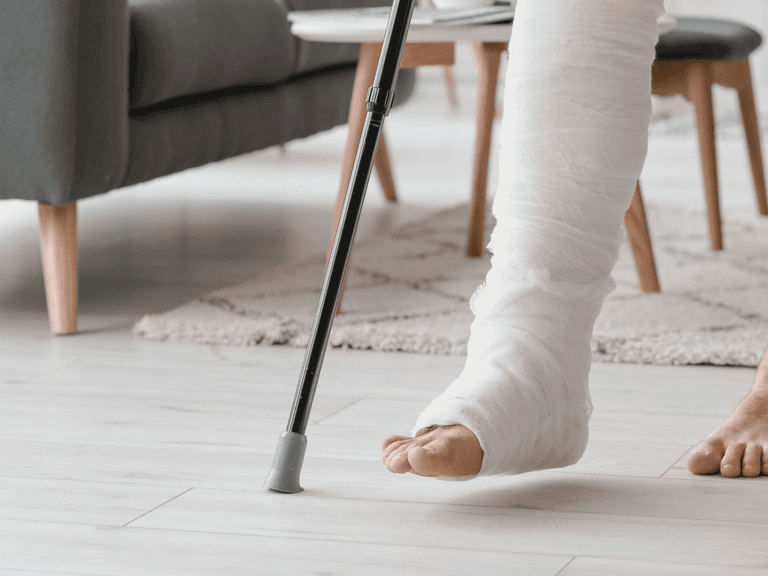Can you Claim Compensation for a Trampoline Accident?

Trampolining is a popular activity for adults and children alike used for both fun and a way to enjoy getting fit. Whilst most users enjoy using trampoline parks, they are not without risk, as the NHS are seeing increasing numbers of admissions from accidents taking place at these parks.
The Guardian newspaper has reported that ambulances were called to trampoline parks more than 300 times in a single year, an average of over one a day - and these don't account for people who have made their own way to hospital, so the true number of accidents is likely to be much higher.
And because these parks are rapidly growing in popularity; with more than 140 dedicated trampoline parks having opened across the country in 3 years; the number of trampoline accidents is expected to rise.
What types of injuries do people suffer when trampolining?
The equipment in use at a trampoline park can be dangerous. The injuries being sustained range in severity, with broken limbs being the most common reason for an ambulance call out, and injuries to the spine and head also being reported.
Other common injuries that can occur are
- Head trauma
- Back and spinal injuries
- Breaks and fractures
- "Knee to face" injuries causing dental and facial injuries
- Strains and sprains
- Cuts and lacerations
Who is at fault for accidents?
Whilst some trampoline accidents will be the users fault, others are due to the operators negligence.
If you or your child were injured because of someone else’s negligence, you could make a trampoline accident compensation claim.
Who is responsible for trampoline park safety?
Responsibility for trampoline safety in the UK lies with whoever is the owner of the trampoline or operator of the trampoline park, or exercise class (including anyone who has purchased, hired or rented a trampoline for either personal usage, an event, an occasion or a public place).
The owner or occupier of a trampoline park has a duty of care to those using their facilities, as set out in legislation such as the Occupiers’ Liability Act 1957.
They must ensure that their facilities are safe for members of the public to use for their intended purpose. Their duty of care requires them to carry out the following:
- Ensuring facilities are correctly maintained and set up. This may include placing safety netting when necessary.
- Regularly carry out a risk assessment and put any steps in place to prevent accidents
- Providing proper and necessary training to staff. This may include providing first aid training to staff
- Ensuring those using the facilities are given appropriate guidance and training in how to do so safely
- Ensuring those using the facilities are fit and able to do so safely and are in an adequate mental and physical condition to use the trampoline
- Adequately supervise anyone using the trampoline, especially children
Customers at trampoline parks and in classes also have a duty of care to themselves and to others using the facilities. Customers should ensure they use equipment in the directed ways and avoid any unnecessary risks.
How can trampoline accidents be caused by negligence?
A trampoline injury could be caused by a variety of different types of accidents. Possible causes of a trampoline accident may include:
- The negligent installation or maintenance of facilities. Accidents may be more likely to occur if a trampoline has not been correctly installed or maintained.
- Overcrowding. Operators should ensure that facilities are not overcrowded and do not exceed safe use guidelines. The failure to do so could cause falls or collisions.
- Slips, trips and falls. These accidents may be caused in a variety of different ways such as a defective trampoline or damaged floor which has not been repaired.
- Failing to install adequate safety features. This may include the installation of features such as safety netting. Not doing so could increase the risk of users suffering trampoline injuries.
- Failing to correctly manage areas such as foam pits. Such areas may only be used by limited numbers of people at once and the failure to limit usage could lead to collisions and other accidents.
What is a Trampoline Accident Compensation Claim?
A trampoline accident compensation claim is a type of public liability claim. It is a way to seek damages if you or a child have been injured in a trampoline park or similar space due to the negligence of the facility.
To claim for a trampoline park accident, you must meet the relevant eligibility criteria:
- You were owed a duty of care by the owner/ occupier of the park.
- They failed to meet this duty of care. For example, they may have failed to fix a broken or damaged trampoline.
- This breach resulted in your injury. Common trampoline injuries may include a broken or fractured bone.
If you have suffered an injury at a trampolining park, depending upon the severity, this may have resulted in you being unable to work or unable to look after yourself or others. The victim can therefore be left without any income or support.
If the park has been negligent and the customer suffers injury as a result, then the customer is entitled to claim compensation. Please contact our team for further information on how to claim for a trampolining accident..

Personal Injury Claims
You may be able to make a personal injury claim for compensation if you have been injured due to the negligence of another person or organisation. To find out more about Personal Injury Claims and our specialist team, see here: